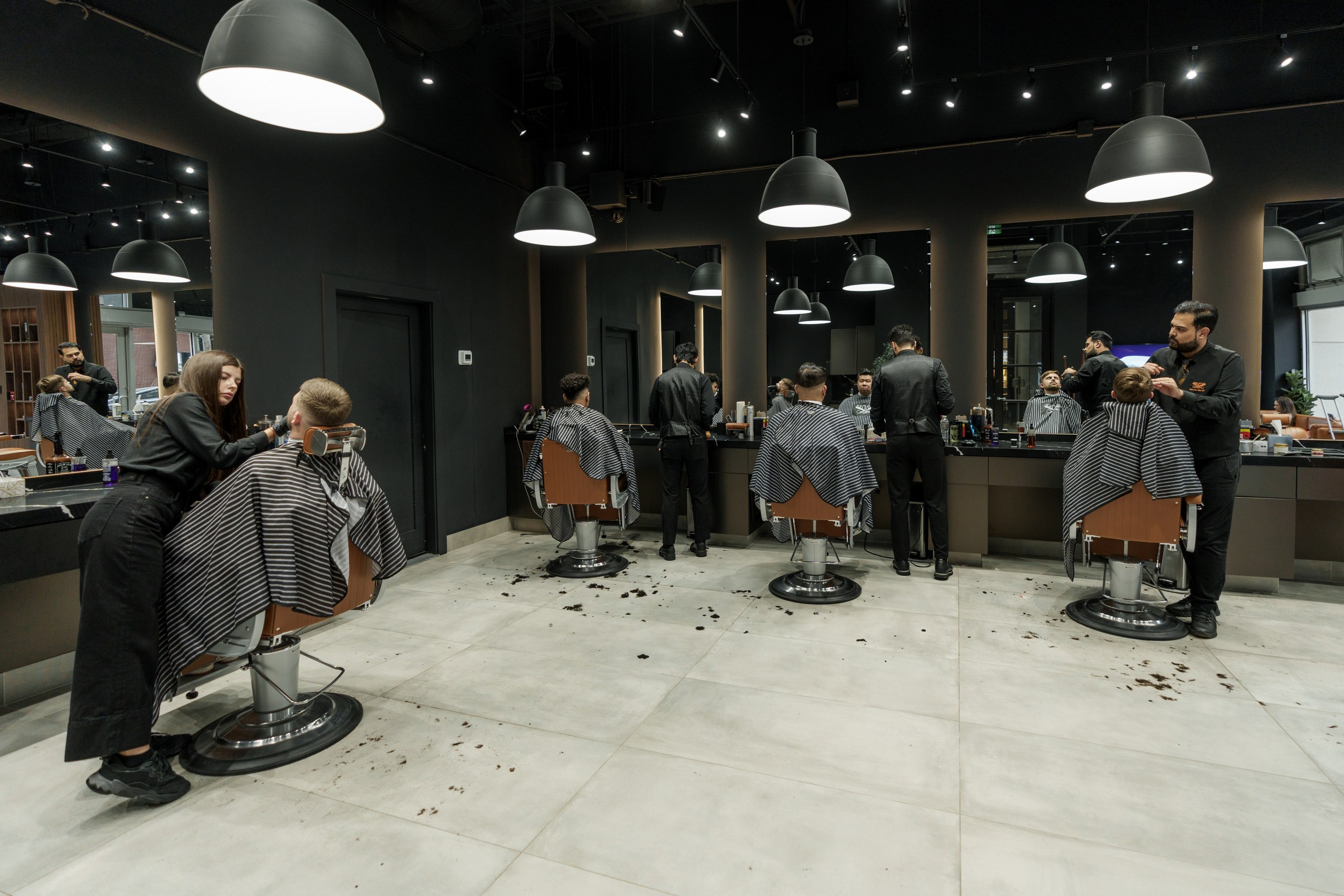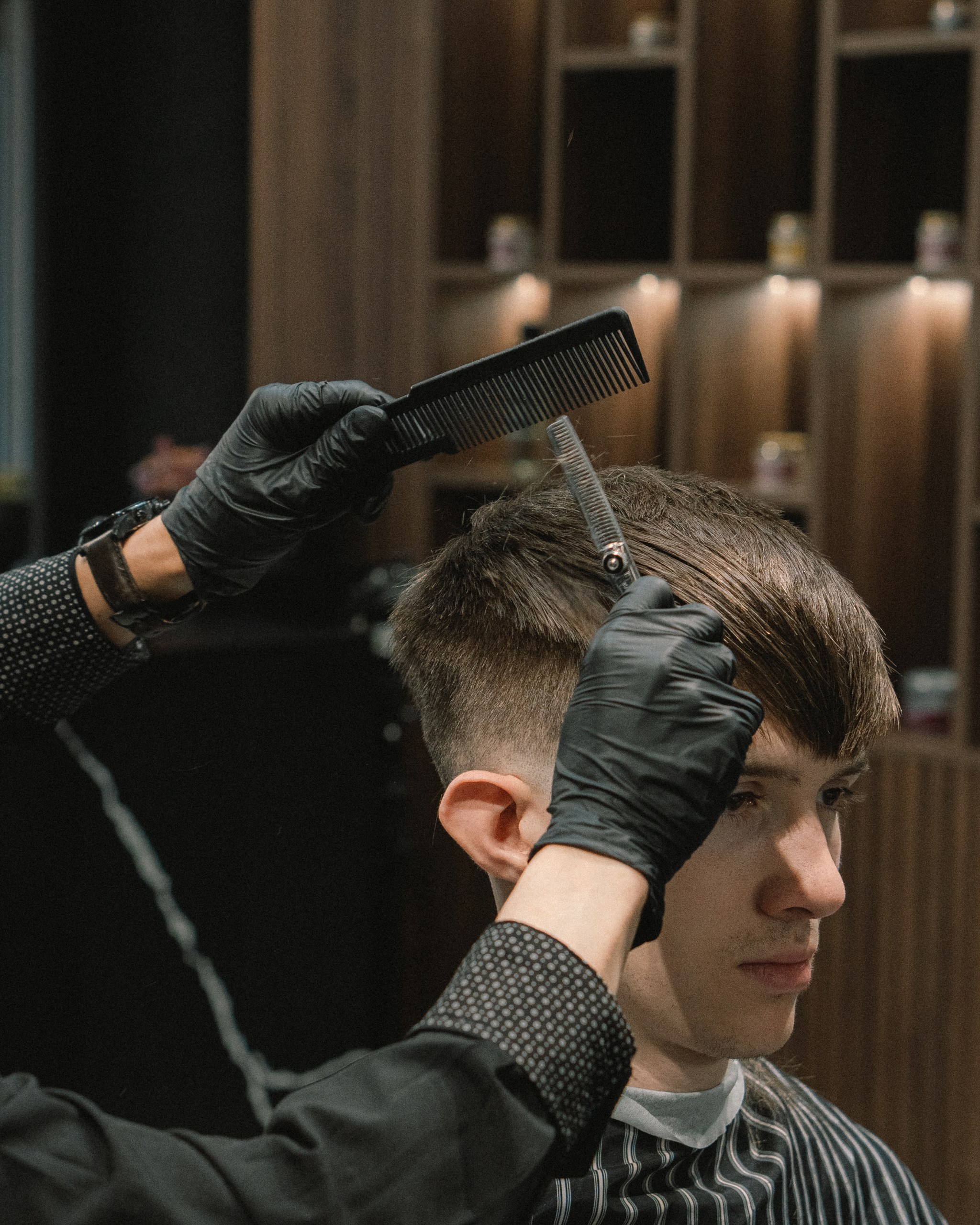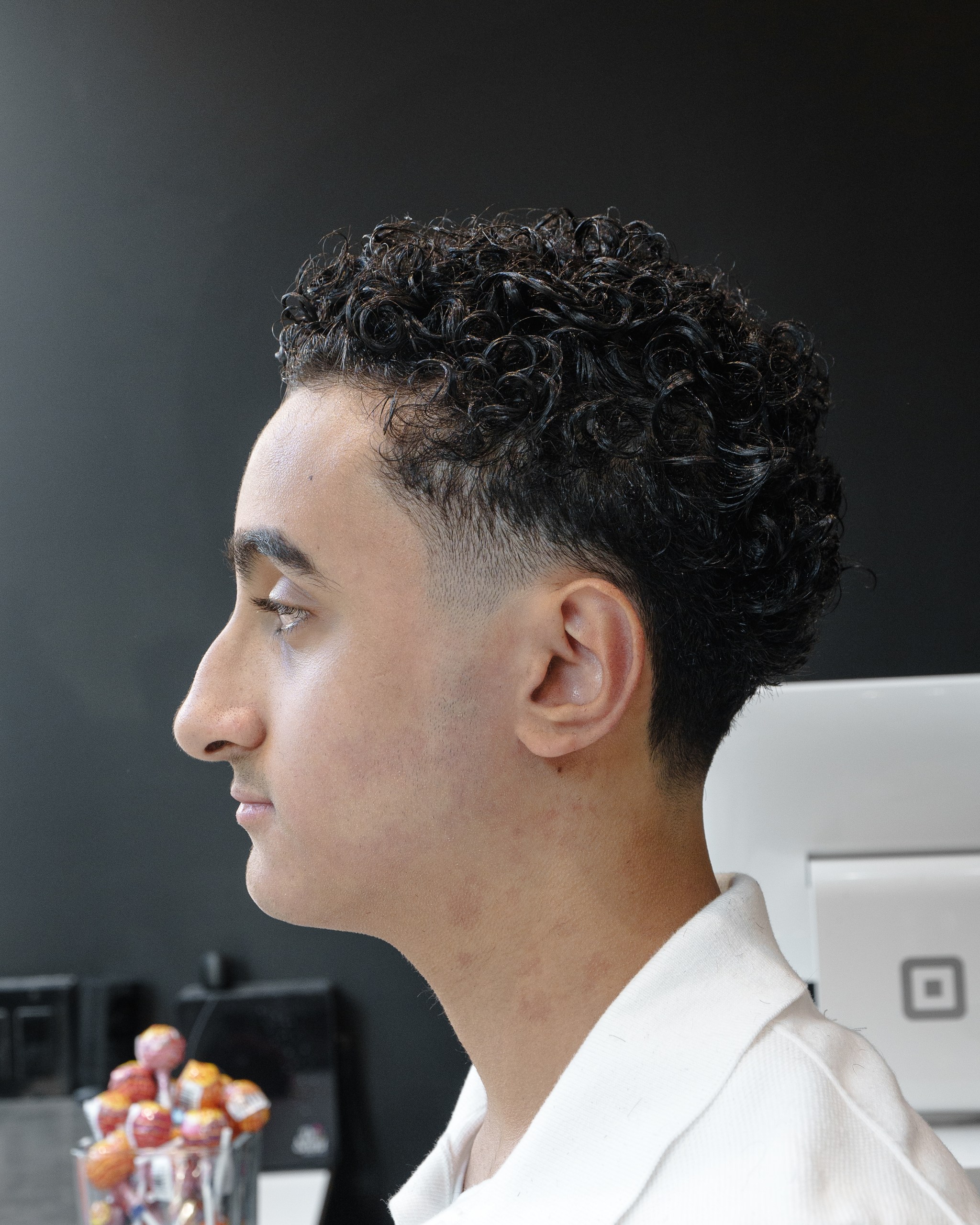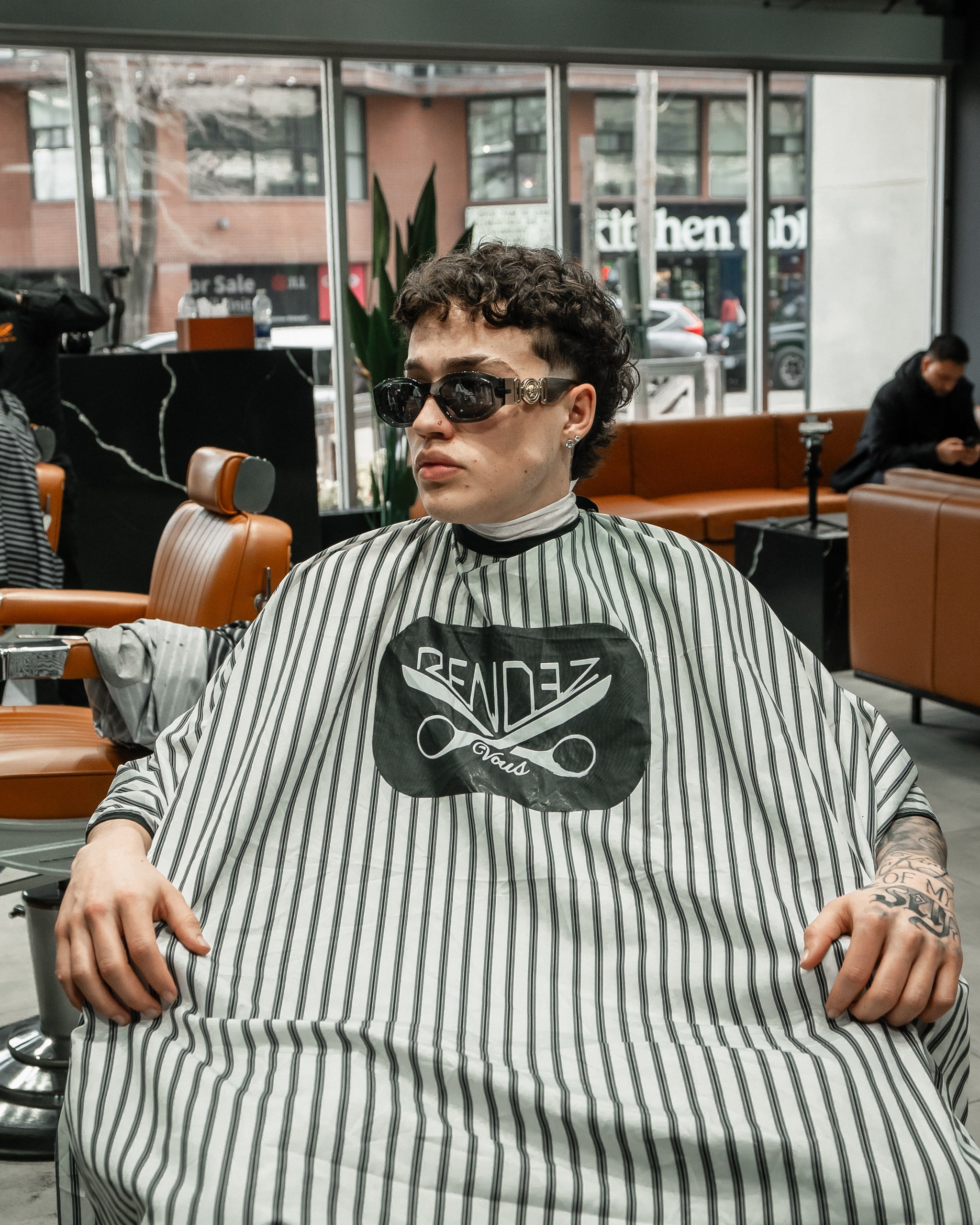Summer sun feels great on your skin, but it's wreaking havoc on your hair in ways most Toronto men don't realize. That rough, dull feeling after spending time outdoors isn't just in your head – it's actual structural damage happening at the molecular level.
At Rendezvous Barbers, we see the aftermath of UV exposure every day. Clients come in wondering why their hair feels different, looks lifeless, or won't hold style the way it used to. The culprit? Ultraviolet radiation systematically breaking down your hair's protective structure.
Understanding what's actually happening to your hair – and why – is the first step toward preventing and repairing sun damage.
The Cuticle Under Attack
Your hair's outer layer, the cuticle, consists of overlapping scales that protect the inner cortex. Think of it like roof shingles – when intact, they create a smooth, protective barrier. UV radiation disrupts this structure in specific, measurable ways.
UV-A radiation (315-400 nanometers) penetrates deepest into the hair shaft. It breaks down the lipid layer that holds cuticle scales together, causing them to lift and separate. This is why sun-damaged hair feels rough when you run your fingers through it – those lifted scales are literally catching on each other.
UV-B radiation (280-315 nanometers) primarily affects the hair's surface. It degrades the 18-methyleicosanoic acid (18-MEA) layer, which is responsible for your hair's natural shine and water resistance. Once this layer is compromised, hair loses its ability to reflect light properly and starts looking dull.
The damage is cumulative. Each exposure session adds to the breakdown, and unlike skin, hair can't repair itself. What's damaged stays damaged until you cut it off.
Protein Breakdown: The Keratin Crisis
Hair is approximately 95% keratin protein, held together by disulfide bonds, hydrogen bonds, and salt bridges. UV radiation targets these bonds systematically, weakening the hair's overall structure.
Disulfide bonds are the strongest connections in hair, giving it tensile strength and elasticity. UV exposure causes these bonds to break randomly throughout the hair shaft. This is why sun-damaged hair stretches more when wet and snaps more easily when dry.
Hydrogen bonds affect hair's ability to hold moisture and maintain shape. UV damage disrupts these bonds, explaining why sun-damaged hair won't hold a style and feels perpetually dehydrated.
The molecular breakdown happens faster than most men realize. Just four hours of direct summer sun exposure can reduce hair's tensile strength by up to 25%. After a full day at the beach or patio, that number can reach 40%.
The Color Connection
UV radiation doesn't just affect hair structure – it systematically destroys the pigment that gives hair its color. This process affects both natural and artificial color, but in different ways.
Natural pigment breakdown: Hair contains two types of melanin – eumelanin (dark pigment) and pheomelanin (light/red pigment). UV-A radiation breaks down eumelanin more rapidly than pheomelanin, which is why dark hair often develops reddish or orange tones after sun exposure.
Artificial color destruction: Hair dye molecules are larger and more complex than natural melanin, making them more susceptible to UV damage. The larger the molecule, the faster it breaks down. This is why vibrant colors fade to muddy tones in the sun, and why red dyes disappear faster than brown ones.
The fading process isn't just about color intensity – it's about molecular structure. UV radiation breaks large dye molecules into smaller fragments, which often have completely different colors than the original. This is why faded hair doesn't just look lighter – it looks completely different.
Water Loss and Porosity Changes
Healthy hair maintains a moisture content of 12-15%. UV damage compromises the hair's ability to retain water, leading to chronic dehydration that affects both appearance and manageability.
Increased porosity: As UV radiation lifts cuticle scales, hair becomes more porous. While this might seem like it would help with moisture retention, the opposite happens. Damaged cuticles can't regulate water absorption and loss, leading to a cycle of over-hydration followed by rapid dehydration.
Lipid layer destruction: The natural oils that coat hair and keep it flexible are broken down by UV exposure. Without this protective layer, hair becomes brittle and prone to breakage. This is why sun-damaged hair often feels dry even immediately after washing.
The moisture loss creates a feedback loop. Dehydrated hair is more susceptible to further UV damage, making the problem progressively worse with each exposure.
The Recovery Timeline
Understanding how long UV damage takes to repair helps set realistic expectations for treatment.
Immediate effects (0-24 hours): Hair feels rough and looks dull. Cuticles are lifted but not permanently damaged. This stage is mostly reversible with proper treatment.
Short-term damage (1-7 days): Protein bonds begin breaking down. Hair loses elasticity and starts feeling brittle. Some damage can still be repaired, but recovery requires more intensive treatment.
Long-term damage (weeks to months): Structural integrity is compromised. Hair breaks easily, won't hold style, and has permanent porosity changes. This level of damage can only be managed, not reversed.
The recovery reality: Severely sun-damaged hair needs to be cut off. There's no product or treatment that can rebuild broken disulfide bonds or repair destroyed cuticles. The goal becomes managing damage until healthy hair grows out.

Prevention That Actually Works
UV-blocking ingredients: Look for products containing zinc oxide, titanium dioxide, or chemical UV filters like avobenzone. These ingredients need to be applied to slightly damp hair and reapplied every 2-3 hours for effectiveness.
Physical protection: Hats provide the most reliable protection, but they need to be worn consistently. A baseball cap protects the top of your head but leaves the sides and back exposed.
Timing strategy: UV radiation is strongest between 10 AM and 4 PM. Even 30 minutes of direct sun exposure during peak hours can cause noticeable damage to unprotected hair.
Treatment Options That Work
Protein treatments: Products containing hydrolyzed keratin or amino acids can temporarily fill in damaged areas of the hair shaft. These treatments don't repair damage but can improve hair's appearance and manageability for 4-6 weeks.
Cuticle sealers: Silicone-based products can smooth lifted cuticles and restore some shine. They're temporary solutions but can significantly improve the look and feel of sun-damaged hair.
Deep conditioning: Regular moisture treatments help manage the dryness associated with UV damage. Look for products containing ceramides or natural oils that can penetrate the hair shaft.
The treatment reality: Products that claim to "repair" UV damage are misleading. They can improve appearance and manageability, but the underlying structural damage remains until the hair is cut off.
When Professional Help Is Necessary
Severe breakage: If hair is snapping during normal styling or washing, the damage is too extensive for at-home treatment. Professional assessment can determine if anything can be saved.
Uneven damage: Sun damage often affects different parts of the head differently. Professional colorists can assess whether the damage can be blended or if cutting is the only option.
Color correction: UV-damaged color rarely fades evenly. Professional color correction can restore more natural-looking tones while the damaged hair grows out.
The Toronto Factor
Toronto's summer sun is stronger than many men realize. Our latitude means longer days with intense UV exposure, especially during those extended patio sessions that are part of summer life here.
Reflection amplification: Concrete sidewalks, glass buildings, and water all reflect UV radiation upward, increasing exposure to the underside of hair. This creates damage patterns that aren't immediately obvious but become apparent over time.
Seasonal intensity: Toronto's UV index regularly reaches 8-9 in summer months, which is classified as "very high." At these levels, unprotected hair can suffer significant damage in under an hour.
The bottom line: Sun damage to hair is real, cumulative, and largely preventable. Understanding the science behind what's happening helps you make informed decisions about protection and treatment. Your hair can't repair itself the way your skin can – what's damaged stays damaged until you cut it off.
Prevention is always more effective and less expensive than correction. But when damage does occur, knowing what's actually happening at the molecular level helps you choose treatments that work rather than products that just make promises.
Conclusion
Ready to assess your hair's UV damage and develop a protection strategy? Book an appointment at Rendezvous Barbershops for professional guidance on preventing and treating sun damage. We understand how Toronto's climate affects men's hair and can recommend treatments that actually work for your specific situation.













